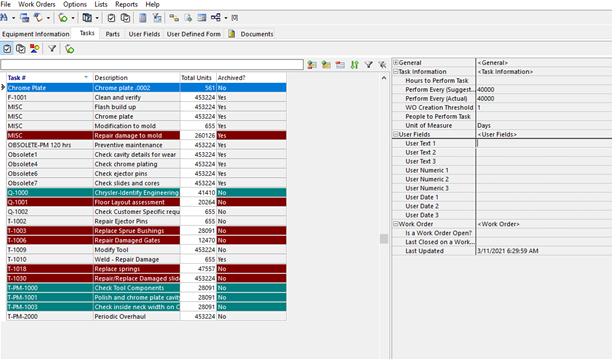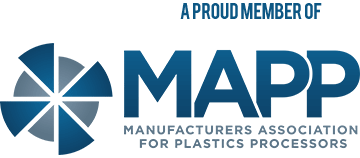Using ERP Software for Predictive Maintenance
With a commitment to quality, Woodland Plastics leverages technology to improve its overall quality functions. One area of focus is maintaining Predictive Maintenance standards through our manufacturing ERP software. By using a centralized software system to document and schedule predictive maintenance, Woodland reduces potential quality issues before they happen, providing an assurance to customers that tooling will continue to run efficiently and product shipped out to customers will conform to drawing specifications. PMs can include anything from cleaning molds to advanced tooling work or repolishing and chrome plating.
Scheduling
One reason for implementing PMs through ERP software is the ease of scheduling and performing PMs. PMs can be set up and scheduled at specific intervals of time such as every 30 days; or may be scheduled based on cycle counts such as every 20,000 cycles or shots a mold produces. When a PM is coming up, a work order can be automatically generated and sent to employees notifying them of the upcoming PM to perform. Each customer or program can be set up individually based on customer-specific PM requirements, or implemented with standard PM objectives. Additionally, PMs can be scheduled between mold runs of different programs, reducing downtime on a molding press or piece of equipment.
Documentation
In addition to scheduling, a major benefit of implementing PMs through ERP software is the level of documentation and recording it provides. Records are available for employees to access prior PMs and review notes and comments inputted, as well as see forecasts into when scheduled PMs are coming up in the future. The ease of use and storing PMs by using ERP eliminates the chances of physical copies getting lost or damaged. Employees can find records of PMs from months or years prior to solve current issues quickly and efficiently.



